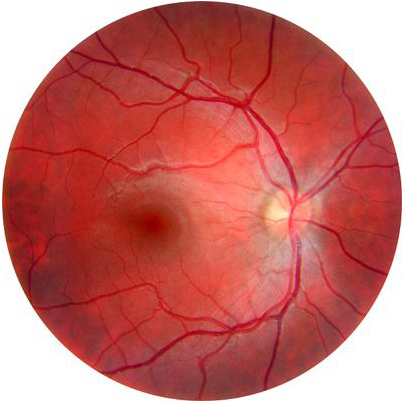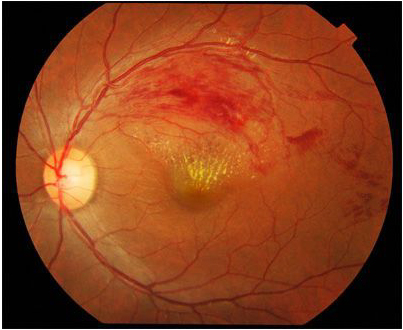VENOUS THROMBOSIS OF THE RETINA
What is venous thrombosis of the retina?
It is a partial or total obstruction of the veins of the retina. Therefore, we can classify it as central venous thrombosis when the central vein of the retina is obstructed (total involvement) or branch venous thrombosis, when it affects a branch of this central vein (partial involvement).
By closing the passage through the vein, and as blood continues to enter the tissues through the arteries, a venous engorgement and subsequent rupture of the capillaries in the territory dependent on that vein occurs because blood pressure increases retrograde to the point of obstruction. These vascular changes cause a typical image of retinal haemorrhage in the affected area.
Symptoms
The affected retinal area, caused by the obstructed venous area, suffers due to lack of oxygenation (ischemia), resulting in most cases in the death of nerve cells in the retina and loss of visual function.
It is characterised by a sudden and painless loss of vision whose amount and relevance will depend on the retinal area that loses its function. Generally, in cases of central obstruction, the loss is severe and in cases of branch obstruction is partial.
The visual prognosis will depend on the affected area and its proximity to the macula (centre of vision).

Normal fundus

Branch venous thrombosis image
Can it be prevented?
Because venous thrombosis of the retina is a vascular disease, some preventive measures can help prevent it:
- Control of blood pressure
- Cholesterol control
- Avoid tobacco
Treatment
In addition to preventive measures, we have intraocular injections to treat patients (corticosteroids, antiangiogenics). In some cases, it is necessary to use laser therapies (photocoagulation) and even eye surgery.


